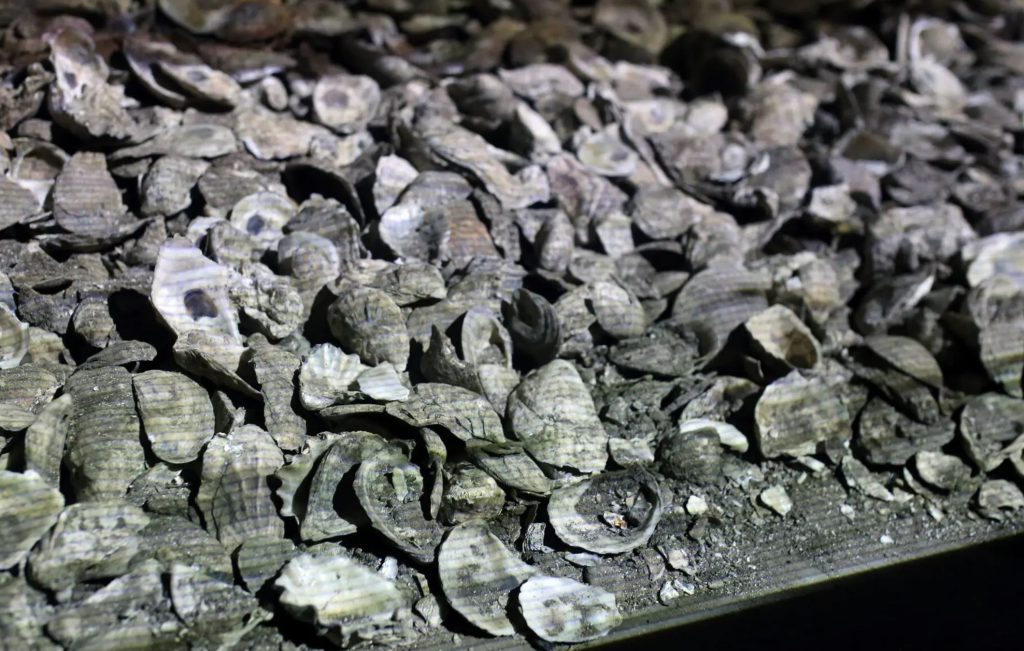Last Sunday, I went to MoMa Ps1 to explore some experimental videos of Greater New York at MOMA Ps1 in Long Island City, Queens. I got to the place where they were supposed to have their video playing in the basement area, and then I heard something familiar. I had been watching those native films for my American History Class, so I could tell that it was Native Indian sound, but they had nothing projected on the wall, so I thought it hadn’t started yet. Later, I noticed that the video was already being played, projected on the floor that was filled with pebbles.

They had this video called “Midden” by renowned artist Alan Michelson. Born in Buffalo, he grew up in Boston, and, after attending Columbia University for a time, returned to New York in 1989. “Midden” refers to monumental mounds of oyster shells that were present when Dutch colonialists started to settle in present-day New York City.
Many of his pieces were horizontal, reminiscent of early panorama art and the woven wampum belts that served as a cultural touchstone for his people. The artist’s obsession with shorelines as liminal zones had led him to go from southern Ontario to Queens to capture video from the bows of boats.

He had the Gowanus Canal in Brooklyn projected onto tons of oyster shells placed there to make it look like a shoreline. You don’t see natives playing their instruments, but you can hear the sounds of songs and drums from behind. The video art in a way feels like a shadow, but then the shadow would not be in color. The video seemed to show the cityscape along the river being shot while driving around or from a running train. You would see the cityscape and water a little opaque but in color and, surprisingly, without the sky part, completely transparent
Michelson does not consider himself an “environmental artist.” But he has long been preoccupied with the destruction and transformation of the Indigenous environment by colonialism. Michelson’s doing something different to leave people in wonder and present his brilliant art through which he could pay homage to his people, the Lenapehoking, and their ancestral homeland was a brilliant idea in itself. I did not know that he himself was Native American until this point. Also, I subsequently discovered that the melody playing in the background was the music they used in the Delaware skin dance.

According to what I read, Michelson would go to New York City’s local restaurants and collect oyster shells, reseed them, and carefully release them into the sea. Now, as I have mentioned above, these native Indians wear bracelets that are made out of the pink part of the shells, and they call this wampum. This wampum not only has aesthetic value, but it also has spiritual value, and his collecting that massive number of shells to make it noticeable from all around or say to give it a louder voice to the cause he is working on is great art. Personally, I believe this video art was experimental for Michelson, but it has already contributed a whole new dimension to modern video art. I never thought in this way that one could utilize their art to have their voice heard in a broader social arena. I think more and more new artists like myself will be inspired by this genius art in the coming days.

See Ya..